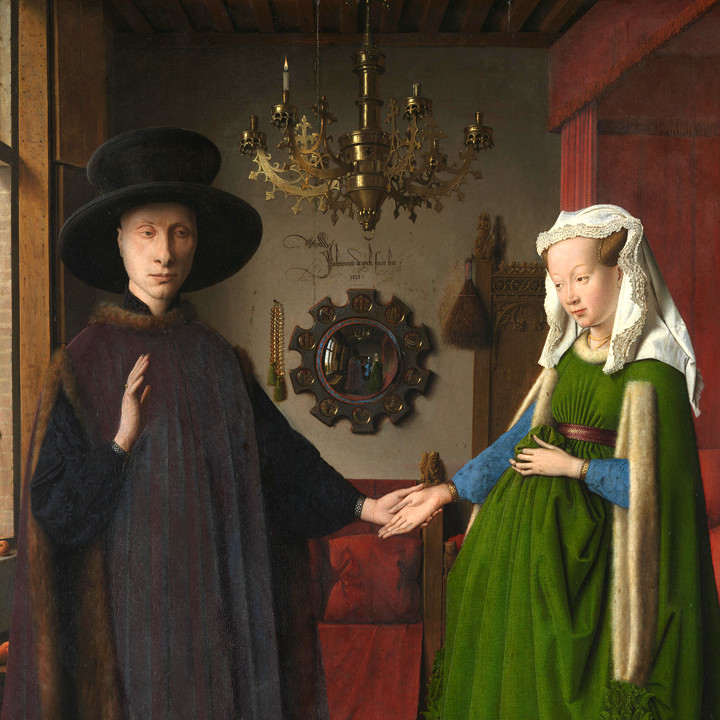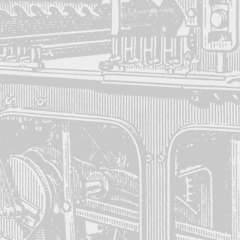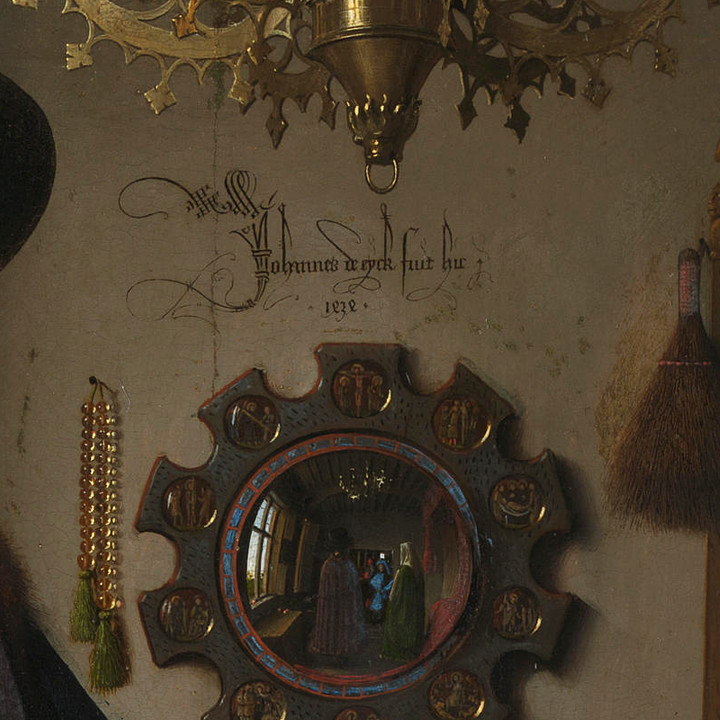Chris Miller originally sent me an email to tell me there was a new “camera lucida” device, a NeoLucida, available online (they had previously sold out when they were initially offered through Kickstarter.com). The name was familiar, I used a Lucigraph for years to size and trace various elements of illustrations—the same basic idea. But I had not heard of the NeoLucida.
As I looked into it, what caught my ear was mention of the controversy created by the book Secret Knowledge written by British artist David Hockney. Hockney’s thesis is that, beginning in the early 1400s there was a rather dramatic rise in the quality of realism in paintings. He poses that a number of artists came onto the scene whose work was almost photographic in nature. They were reproducing patterns, reflections, the folds in fabric, focal length and so on, in ways previously unknown or rarely seen.
Hockney points to the detail (above) from Van Eyck’s Arnolfini Portrait (below), as a clue to his assertion that Van Eyck used optics.

It’s a very interesting, understandably controversial story.
From a lecture series at The MET: On the Use of Optical Devices by Renaissance Painters—in five parts
The abstract of this July 2016 article from The Journal of Optics and IOP Science states, “This paper initially presents a demonstration of the ability of 17th century artists to achieve self-portrait projections using concave and flat mirrors, and subsequently develops a case for the likelihood of this technique being employed by Rembrandt van Rijn and other old master painters.”
Painter and author Gregg Kreutz is among those who refutes the theory…
As I mentioned, I owned a Goodkin Lucigraph for many years, which I used to compose illustrations, comps, storyboards, and such. You would place the subject (typically a Polaroid or other reference photograph) on the plate below the bellows and a sheet of tracing paper on the glass above. The cranks on the left and right were used to focus the image being projected on the paper. Then you would trace whatever elements you wanted to isolate and add your own style to the rendering.




Thoughts?